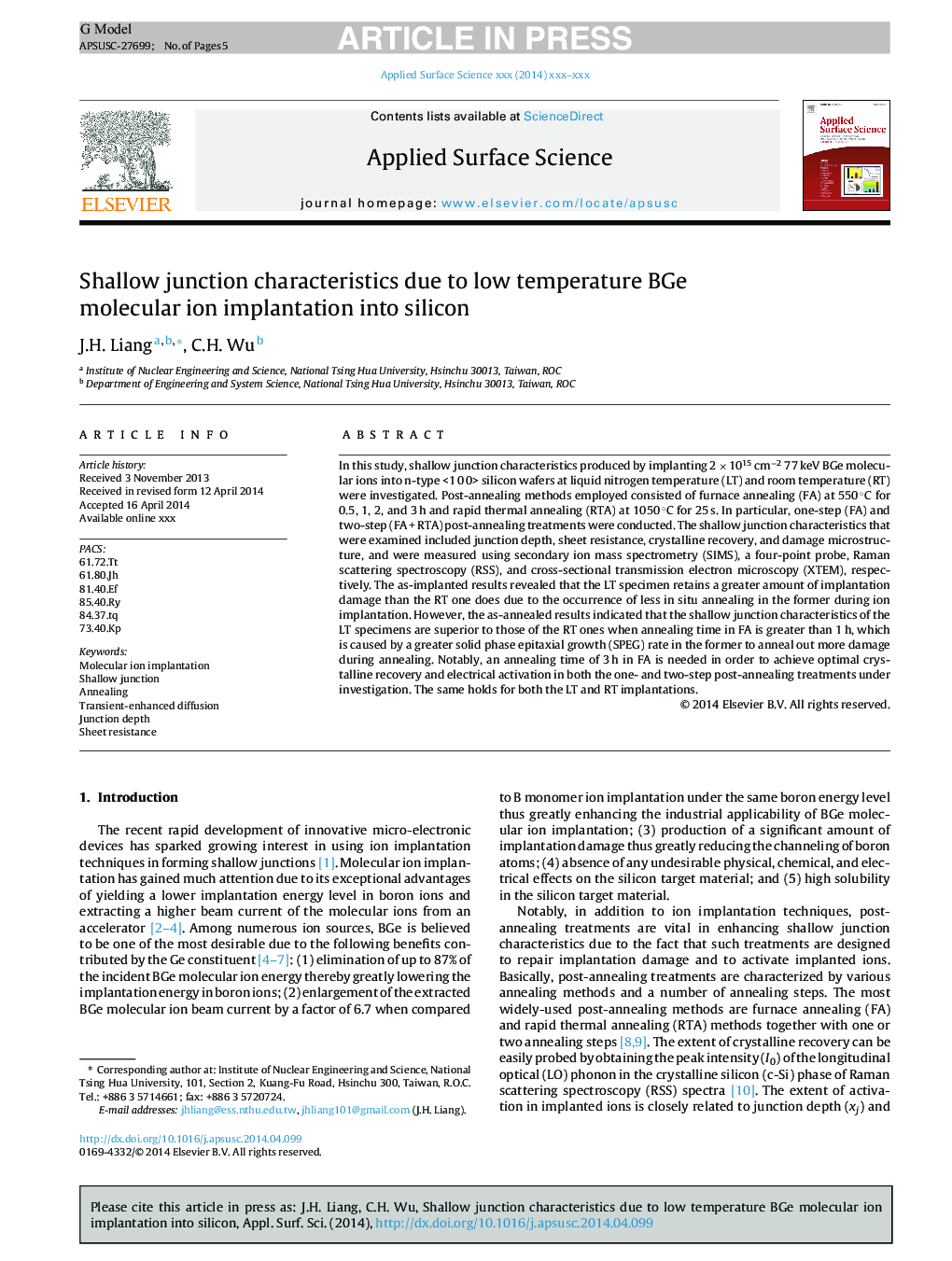| کد مقاله | کد نشریه | سال انتشار | مقاله انگلیسی | نسخه تمام متن |
|---|---|---|---|---|
| 5356673 | 1503654 | 2014 | 5 صفحه PDF | دانلود رایگان |
عنوان انگلیسی مقاله ISI
Shallow junction characteristics due to low temperature BGe molecular ion implantation into silicon
دانلود مقاله + سفارش ترجمه
دانلود مقاله ISI انگلیسی
رایگان برای ایرانیان
کلمات کلیدی
موضوعات مرتبط
مهندسی و علوم پایه
شیمی
شیمی تئوریک و عملی
پیش نمایش صفحه اول مقاله

چکیده انگلیسی
In this study, shallow junction characteristics produced by implanting 2 Ã 1015 cmâ2 77 keV BGe molecular ions into n-type <1 0 0> silicon wafers at liquid nitrogen temperature (LT) and room temperature (RT) were investigated. Post-annealing methods employed consisted of furnace annealing (FA) at 550 °C for 0.5, 1, 2, and 3 h and rapid thermal annealing (RTA) at 1050 °C for 25 s. In particular, one-step (FA) and two-step (FA + RTA) post-annealing treatments were conducted. The shallow junction characteristics that were examined included junction depth, sheet resistance, crystalline recovery, and damage microstructure, and were measured using secondary ion mass spectrometry (SIMS), a four-point probe, Raman scattering spectroscopy (RSS), and cross-sectional transmission electron microscopy (XTEM), respectively. The as-implanted results revealed that the LT specimen retains a greater amount of implantation damage than the RT one does due to the occurrence of less in situ annealing in the former during ion implantation. However, the as-annealed results indicated that the shallow junction characteristics of the LT specimens are superior to those of the RT ones when annealing time in FA is greater than 1 h, which is caused by a greater solid phase epitaxial growth (SPEG) rate in the former to anneal out more damage during annealing. Notably, an annealing time of 3 h in FA is needed in order to achieve optimal crystalline recovery and electrical activation in both the one- and two-step post-annealing treatments under investigation. The same holds for both the LT and RT implantations.
ناشر
Database: Elsevier - ScienceDirect (ساینس دایرکت)
Journal: Applied Surface Science - Volume 310, 15 August 2014, Pages 230-234
Journal: Applied Surface Science - Volume 310, 15 August 2014, Pages 230-234
نویسندگان
J.H. Liang, C.H. Wu,